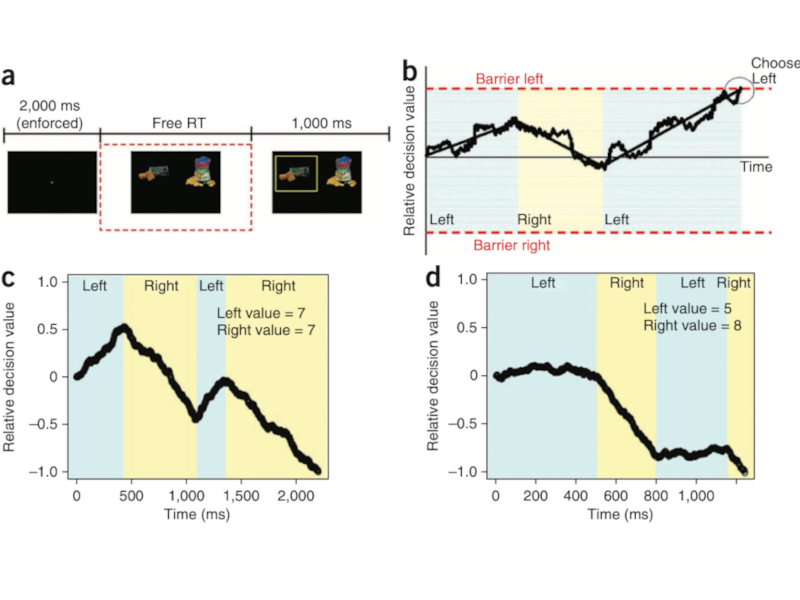Increasing a Visual Stimulus’ Duration Raises its Value in Our Brain
When making choices, we often compare the value of different options to decide. In a new study, scientists have used eye-tracking technology to explore how people make these comparisons. They found that when looking at two options, our eyes tend to fixate on the more valuable one for extended periods. It suggests that we use visual cues to help us make decisions. This process of comparison is thought to help us choose the option that is most valuable to us. However, the diminutive is known about how this process works or visual fixations’ role in simple decision choices. For a practical understanding of this process, we formed a computational model of value-based binary options and tested it on people using eye-tracking. It is proved that the model could quantitatively explain complex relations between fixation forms and choices. Our findings suggest that visual fixations play an essential role in guiding the comparison process of values and helping us make decisions. This research provides new insights into the part of visual information in decision-making and has implications for our understanding of how we make choices.

The main idea for deriving visual fixations when making simple choices.
When making a choice, we often compare multiple options before deciding which one to choose. This process of comparison is thought to help us determine the option that is most valuable to us. However, slightly is known about how this procedure works or what role visual fixations play. Fixation is when our eyes stop moving and stare at a single point for some time. Fixations usually last between 100 and 400 milliseconds (ms) and often occur several times per second. When making choices, we often compare multiple options before planning. This process of comparison is thought to help us choose the option that is most valuable to us. Research suggests that fixations may play a role in helping us compare options and make decisions by allowing us to focus on one option at a time and process information more deeply. Future research will need to study this option further to understand the role of fixations in decision-making more fully.

(b) using DDM, the slope shows the bias (due to fixation) in her choice which is evolving over time.
Implications of findings on visual fixations and comparisons of value in simple choices.
Fixations affect the DDM value comparison by introducing a temporary drift bias toward the fixated item. This drift bias leads to a choice bias for things that are fixated on more. The current study is intended to advance and test a model of how visual fixations are used to guide the decision-making process. The model is based on the diffusion decision model (DDM; Ratcliff, 1978), which is successfully used to explain various choice tasks. The current model simplifies the DDM and does not include all the features of the DDM (e.g., non-linearities). However, we believe it captures the essential elements of visual fixations used to guide decisions. We tested the model on a single task and found that it could quantitatively explain the complex relationship between fixation patterns and choices. However, more than a few limitations should be considered when inferring these results. First, we tested the model on a single task and did not generalize it to other tasks. Second, we could not access the participants’ actual choices, so we could not directly test whether the model could predict choice behavior. Despite these restrictions, we believe that the current study provides a valuable contribution to our understanding. Future studies should address these limitations.
Takeaway on visual fixations and comparisons of value in simple choices.
When making simple choices, your eyes will drift toward the item that seems to be most valuable to you. This bias is introduced through the process of visual fixation. It can lead to a choice bias for the items that are fixated on more. While we still have plentiful to acquire about how these processes work, it’s essential to understand their implications on our everyday decisions. Applying these findings in your own life can help you make better choices based on what your eyes are drawn to. The takeaway from this study is that when making choices, we use visual cues to help us compare the value of different options. It suggests that our eyes play an essential role in decision-making. The findings could have implications for various fields, from marketing to the workplace. In the future, eye tracking technology may help us understand even more about the complex decision-making process. It is an exciting research area still in its early stages. It will be interesting to see how the findings are used in the future to help us understand more about how we make choices.
